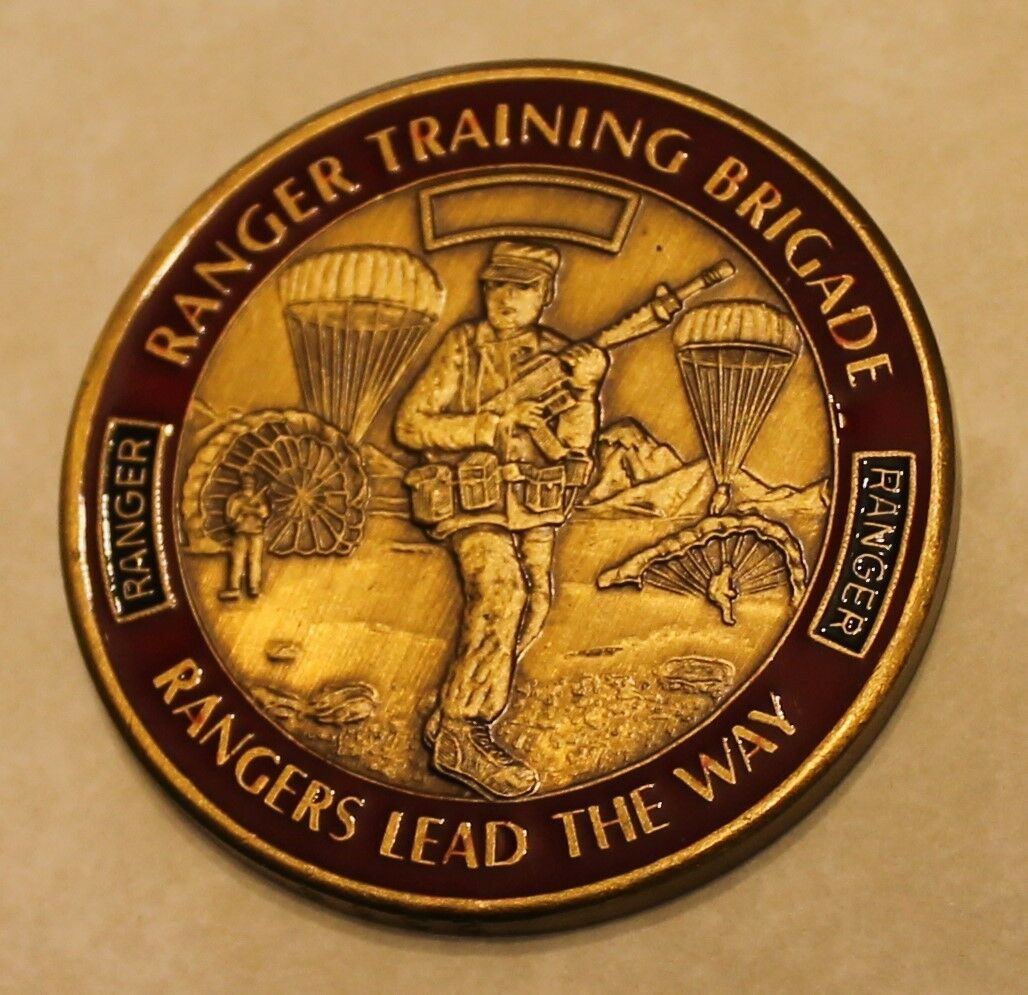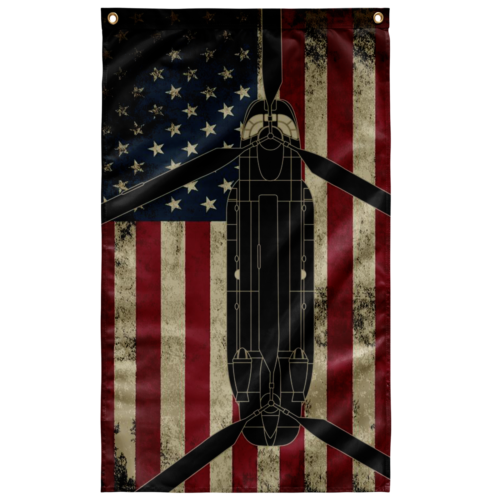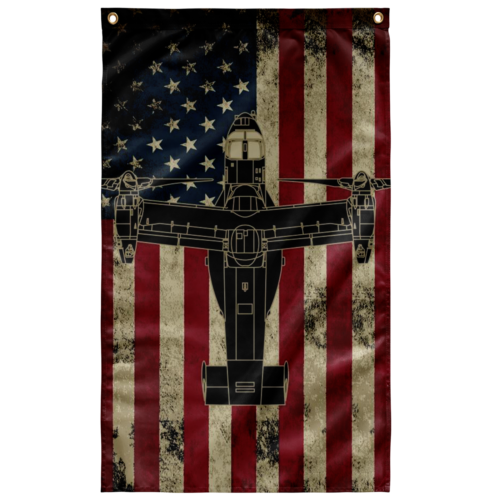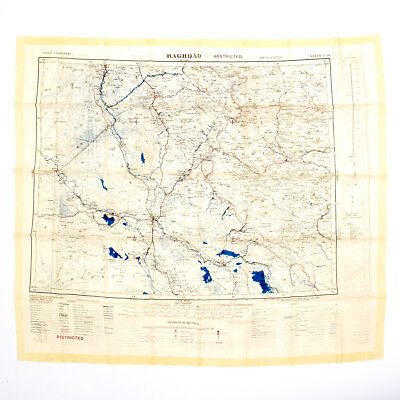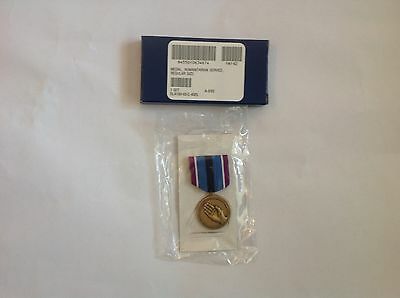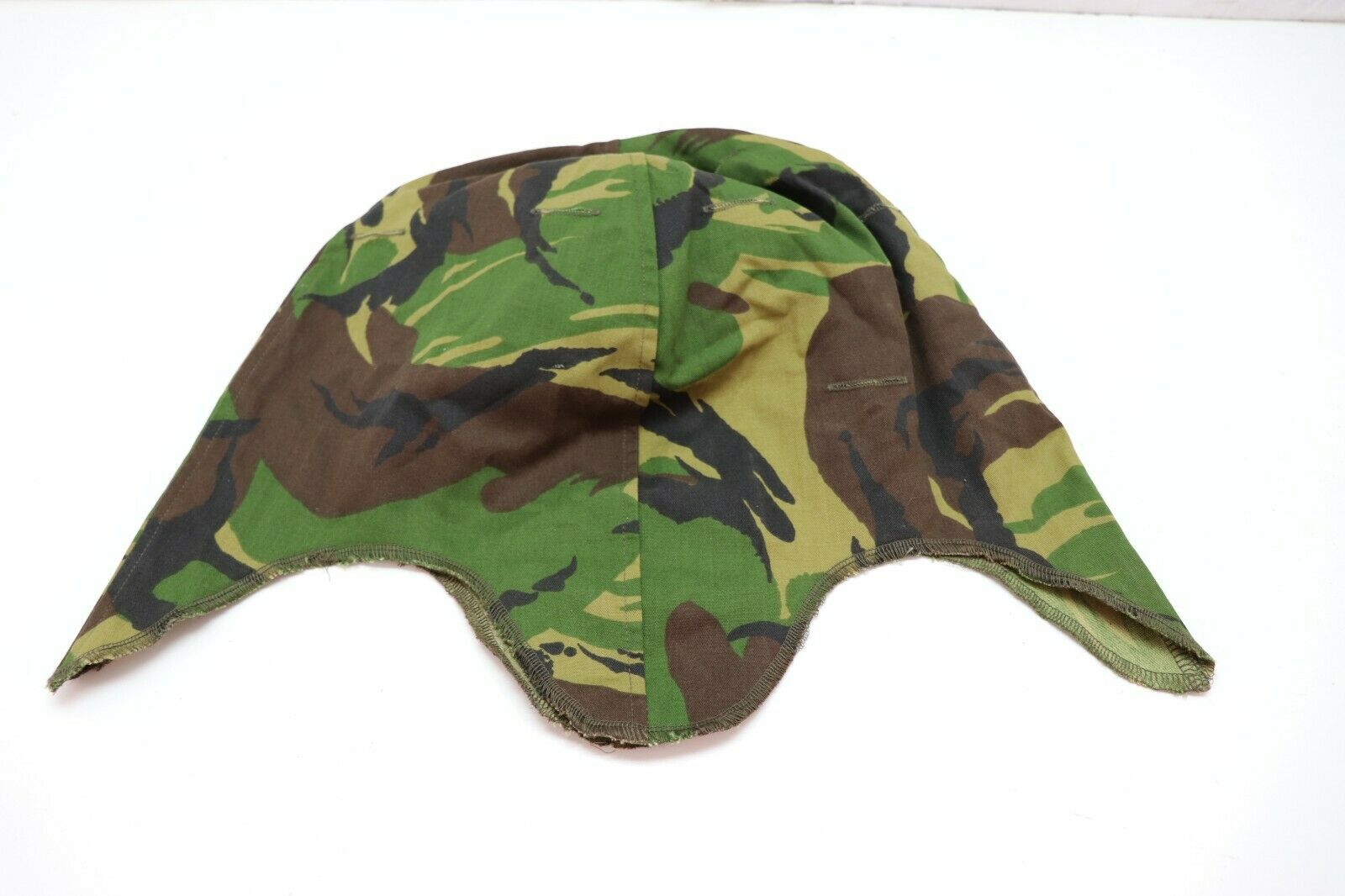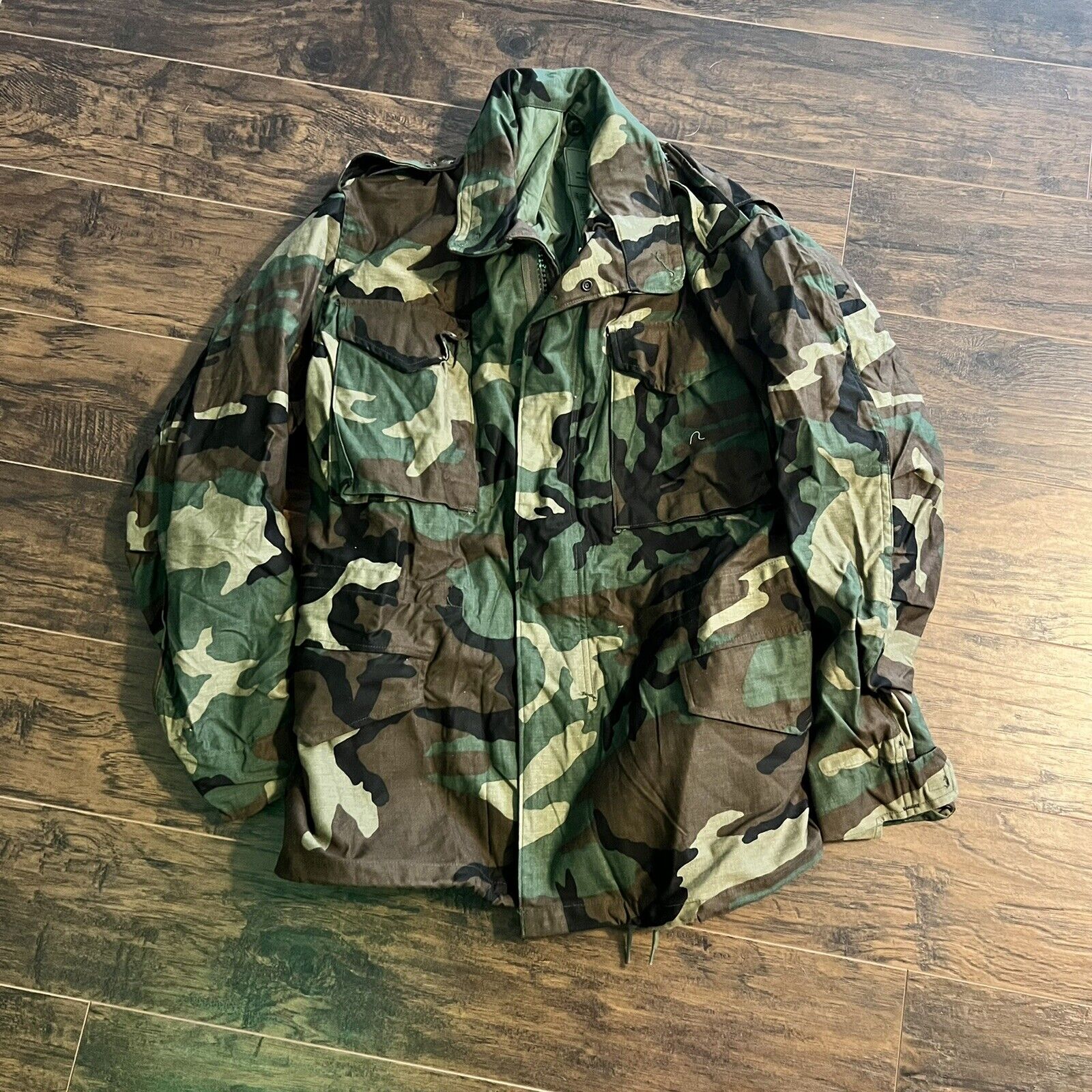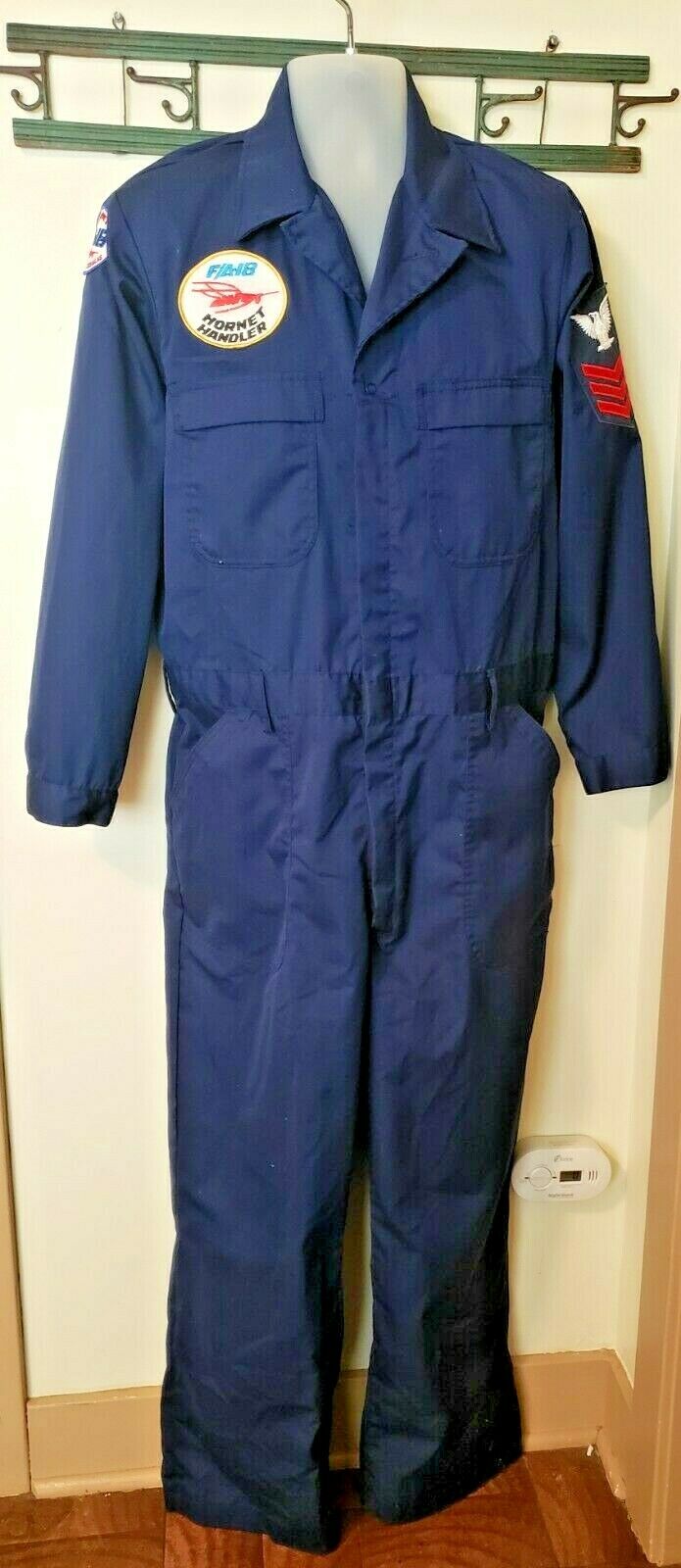-40%
Ranger Training Brigade Ser #2344 Color Hard Baked Enamel Army Challenge Coin
$ 145.19
- Description
- Size Guide
Description
Ranger Training BrigadeSerial
#2344
Camp Rodgers
Camp Darby
Camp Merrill
Camp Rudder
Hard Baked Enamel
Army Challenge Coin
Condition
: Used, but in nice shape. Please see pictures.
This coin is 1 5/8 inches in diameter with serial number:
2344
. An actual unit coin.
Copyright:
DKP
NOTE:
This Army Ranger challenge coin is an actual unit coin and is a hard find.
It was acquired from an expert in Special Forces challenge coins who has been researching and dealing in older coins for more than 20 years.
I was fortunate to obtain some of these wonderful coins in very nice condition, which are seldom or if ever seen for sale.
Will entertain trade for other actual unit Army Ranger challenge coins.
All coins are guaranteed to be in excellent condition unless otherwise specified above.
Training
Ranger School training has a basic scenario: the flourishing drug and terrorist operations of the enemy forces, the "Aragon Liberation Front," must be stopped. To do so, the Rangers will take the fight to their territory, the rough terrain surrounding Fort Benning, the mountains of northern Georgia, and the
swamps
and coast of Florida. Ranger students are given a clear mission, but they determine how to best execute it.
The purpose of the course is learning to soldier as a combat leader while enduring the great mental and psychological stresses and physical fatigue of combat; the Ranger Instructors (RIs) – also known as Lane Graders – create and cultivate such a physical and mental environment. The course primarily comprises field craft instruction; students plan and execute daily patrolling, perform reconnaissance, ambushes, and raids against dispersed targets, followed by stealthy movement to a new patrol base to plan the next mission. Ranger students conduct about 20 hours of training per day, while consuming two or fewer meals daily totaling about 2,200
calories
(9,200
kJ
), with an average of 3.5 hours of sleep a day. Students sleep more before a parachute jump for safety considerations. Ranger students typically wear and carry some 65–90 pounds (29–41 kg) of weapons, equipment, and training ammunition while patrolling more than 200 miles (320 km) throughout the course.
[
11
]
Ranger School students will participate in three
airborne
, and several
air assault
operations throughout the duration of the course, relying on
C-130 Hercules
cargo planes
, as well as
UH-60 Black Hawk
and
CH-47 Chinook
helicopters
, for insertion and extraction. Non-airborne personnel will work
drop zone
details while the other students jump. The students also have the ability to call-in and utilize
close air support
in the form of
AH-64 Apache
attack helicopters
and
AC-130H Spectre
gunships during many of their missions. All aircraft are provided by other nearby units as part of a training co-operative.
Benning phase
The first phase of Ranger School is conducted at
Camp Rogers
and
Camp Darby
at
Fort Benning, Georgia
and is conducted by the 4th Ranger Training Battalion. The "Benning Phase" is the "crawl" phase of Ranger School, where students learn the fundamentals of squad-level mission planning. It is "designed to assess a Soldier’s physical stamina, mental toughness, leadership abilities, and establishes the tactical fundamentals required for follow-on phases of Ranger School".
[
14
]
In this phase, training is separated into two parts, the Ranger Assessment Phase (RAP) and Squad Combat Operations.
The Ranger Assessment Phase is conducted at Camp Rogers. As of April 2011, it encompasses Days 1–3 of training. Historically, it accounts for 60% of students who fail to graduate Ranger School.
[
11
]
Events include:
Ranger Physical Fitness Test (RPFT) requiring the following minimums:
Push-ups: 49 (in 2 minutes, graded strictly for perfect form)
Sit-ups: 59 (in 2 minutes)
Chin-ups: 6 (performed from a dead hang with no lower body movement)
5 mile individual run in 40 minutes or less over a course with gently rolling terrain
Combat Water Survival Test (no longer conducted as of 2010)
Combat Water Survival Assessment, conducted at Victory Pond (previously called the Water Confidence Test). This test consists of three events that test the Ranger student's ability to calmly overcome any fear of heights or water. Students must calmly walk across a log suspended thirty-five feet above the pond, then transition to a rope crawl before plunging into the water. Each student must then jump into the pond and ditch their rifle and load-bearing equipment while submerged. Finally, each student climbs a ladder to the top of a seventy-foot tower and traverses down to the water on a pulley attached to a suspended cable, subsequently plunging into the pond. All of these tasks must be performed calmly without any type of safety harness. If a student fails to negotiate an obstacle (through fear, hesitation or by not completing it correctly) he is dropped from the course.
Combination Night/Day land navigation test – This has proven to be one of the more difficult events for students, as sending units fail to teach land navigation using a map and compass. Students are given a predetermined number of MGRS locations and begin testing approximately two hours prior to dawn. Flashlights, with red lens filters, may only be used for map referencing; the use of flashlight to navigate across terrain will result in an immediate dismissal from the school. Later in the course, Ranger students will be expected to conduct, and navigate, patrols at night without violating light discipline. The land navigation test instills this skill early in each student's mind, thus making the task second nature when graded patrolling begins.
A 3-mile terrain run, followed by the Malvesti Field Obstacle Course, featuring the notorious "worm pit": a shallow, muddy, 25-meter obstacle covered by knee-high
barbed wire
. The obstacle must be negotiated—usually several times—on one's back and belly.
Demolitions training and airborne refresher training.
Modern Army Combatives Program (MACP) training was removed as a part of a new POI at the start of 2009; it was reinstated with Class 06-10. The Combatives Program was spread over all phases and culminated with practical application in Florida Phase. However, MACP has been removed from Ranger again, starting with the Combatives Program in Mountains and Florida and followed by the removal of RAP week combatives in class 06-12.
A 12-mile forced, tactical
ruck march
with full gear from Camp Rogers to Camp Darby. This is the last test during RAP and is a pass/fail event. If the Ranger student fails to finish the march in under 3 hours, he is dropped from the course.
The emphasis at Camp Darby is on the instruction in and execution of Squad Combat Operations. The phase includes "fast paced instruction on troop leading procedures, principles of patrolling, demolitions, field craft, and basic battle drills focused towards squad ambush and reconnaissance missions".
[
14
]
The Ranger student receives instruction on
airborne
/
air assault
operations, demolitions, environmental and "field craft" training, executes the infamous "
Darby Queen
"
obstacle course
, and learns the fundamentals of
patrolling
, warning and operations orders, and communications. The fundamentals of combat operations include
battle drills
(React to Contact, Break Contact, React to Ambush, Platoon Raid), which are focused on providing the principles and techniques that enable the squad-level element to successfully conduct
reconnaissance
and
raid
missions. As a result, the Ranger student gains tactical and technical proficiency, confidence in himself, and prepares to move to the next phase of the course, the Mountain Phase.
Mountain Phase
The second phase of Ranger School is conducted at the remote Camp Merrill near Dahlonega, Georgia by the 5th Ranger Training Battalion. Here, "students receive instruction on military mountaineering tasks, mobility training, as well as techniques for employing a platoon for continuous combat patrol operations in a mountainous environment".
[
14
]
Adding to the physical hardships endured in the Benning phase, in this phase "the stamina and commitment of the Ranger student is stressed to the maximum. At any time, he may be selected to lead tired, hungry, physically expended students to accomplish yet another combat patrol mission".
[
14
]
One of the mental hardships (aside from the pressures of training) is that the Mountain Phase is located 'in the middle of nowhere', several miles from any real civilization. This leaves the students feeling more isolated than they may feel during the other phases. In the winter, the temperatures drop very low at night, and many students (in addition to other ailments) receive frostbite. During the warmer months, poison ivy becomes a common adversary. The Ranger student continues learning how to sustain himself and his subordinates in the mountains. The rugged terrain, severe weather, hunger, mental and physical fatigue, and the psychological stress the student encounters allow him to measure his capabilities and limitations and those of his fellow soldiers.
In addition to combat operations, the student receives four days of military mountaineering training. The sequence of training has changed in past decades. As of 2010, the training sequence is as follows. In the first two days students learn
knots
,
belays
, anchor points, rope management, mobility evacuation, and the fundamentals of
climbing
and
abseiling
. The training ends in a two-day Upper mountaineering exercise at
Yonah Mountain
, to apply the skills learned during Lower mountaineering. Each student must make all prescribed climbs at Mt. Yonah to continue in the course. During the
field training exercise
(FTX), students execute a mission requiring mountaineering skills.
Combat missions are against a conventionally equipped threat force in a Mid-Intensity Conflict. These missions are both day and night in a two part, four and five-day FTX, and include moving cross country over mountains, vehicle
ambushes
, raiding communications and
mortar
sites, river crossing, and scaling steeply sloped mountainous terrain.
The Ranger student reaches his objective in several ways: cross-country movement,
parachuting
into small
drop zones
,
air assaults
into small, mountain-side landing zones, or a 10-mile march across the
Tennessee Valley Divide
. The student's commitment and physical-mental stamina are tested to the maximum. At the end of the Mountain Phase, the students travel by bus to a nearby airfield and conduct an airborne operation, parachuting into Florida Phase. Non-airborne are bussed to
Eglin Air Force Base
for the Florida Phase.
Florida Phase
The third phase of Ranger School is conducted at
Camp James E. Rudder
(Auxiliary Field #6),
Eglin Air Force Base
, Florida by the 6th Ranger Training Battalion. According to the Ranger Training Brigade,
This phase focuses on the continued development of the Ranger Student's combat arms functional skills. Students receive instruction on waterborne operations, small boat movements, and stream crossings upon arrival. Practical exercises in extended platoon level operations executed in a coastal swamp environment test the Students’ ability to operate effectively under conditions of extreme mental and physical stress. This training further develops the Students' ability to plan and lead small units during independent and coordinated airborne, air assault, small boat, and dismounted combat patrol operations in a low intensity combat environment against a well trained, sophisticated enemy.
[
14
]
The Florida Phase continues the progressive, realistic OPFOR (
opposing forces
) scenario. As the scenario develops, the students receive "in-country" technique training that assists them in accomplishing the tactical missions later in the phase. Technique training includes: small boat operations, expedient stream crossing techniques, and skills needed to survive and operate in a
rainforest
/
swamp
environment by learning how to deal with
reptiles
and how to determine the difference between
venomous
and non-venomous snakes. Camp Rudder has specially trained reptile experts who teach the students to not fear the wildlife they encounter.
The Ranger students are updated on the scenario that eventually commits the unit to combat during techniques training. The 10-day FTX comprises "fast paced, highly stressful, challenging exercises in which the Students are evaluated on their ability to apply small unit tactics and techniques during the execution of raids, ambushes, movements to contact, and urban assaults to accomplish their assigned missions".
[
14
]
The capstone of the course is the extensively planned raid of the ALF's island stronghold. This small boat operation involves each platoon in the class, all working together on separate missions to take down the
cartel
's final point of strength.
Afterwards, students who have met graduation requirements spend several days cleaning their weapons and equipment before returning to Fort Benning. By then they have earned PX (
Post Exchange
) privileges, and access to a community center where they can use a telephone, eat civilian food, and watch television. In years past, the "Gator Lounge" served this purpose, but it was destroyed by a fire in late 2005. In the years since, a new "Gator Lounge" has been built, maintaining many of the features of the old one. Graduation is at Fort Benning. In an elaborate ceremony at Victory Pond, the black-and-gold
Ranger Tab
is pinned to the graduating soldier's left shoulder (usually by a relative, a respected RI, or soldier from the student's original unit). The Ranger Tab is permanently worn above the soldier's unit patch.
(REF:
http://en.wikipedia.org/wiki/Ranger_School
)
The accepted payments are: PAYPAL and please contact seller for other methods of accepted payment, which you may have used in past please contact me through the eBay messaging system.
Thanks!
Powered by
eBay Turbo Lister
The free listing tool. List your items fast and easy and manage your active items.
